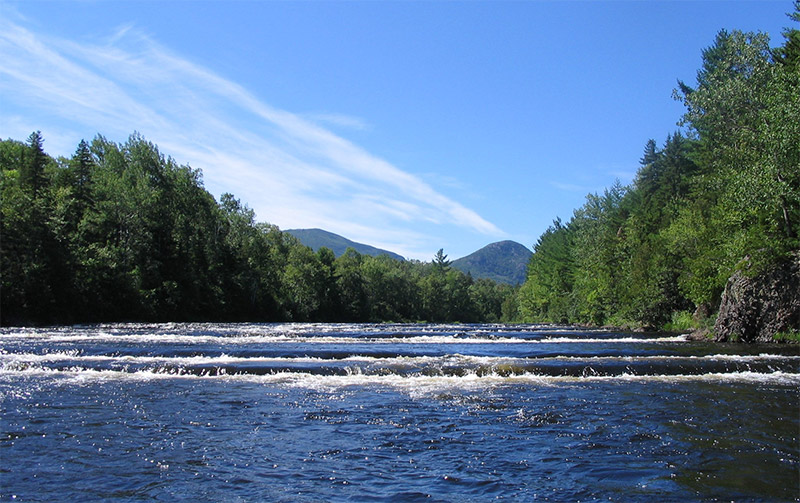This project involved the systematic sampling of non-wadeable rivers in Maine with the goal of developing a fish assemblage assessment tool that is useful to multiple water quality and natural resource management programs and objectives. The conceptual framework of the U.S. EPA Biological Condition Gradient (BCG: Davies and Jackson 2006) was used to guide the development and derivation of an Index of Biotic Integrity (IBI) applicable to a cool-coldwater, moderate-high gradient ecotype. This is the most widely occurring ecotype in Maine's non-wadeable rivers. The highest riverine IBI scores occurred in rivers with an absence of introduced species (especially blackbasses) and with the least degree of modification to natural habitat, flow regime, and water quality. These included the Allagash, Aroostook, and upper Branches of the Penobscot Rivers. Riverine IBI scores were generally the lowest in the lower reaches of coastal draining rivers that have been impacted by extensive habitat and flow alterations by dams and their attendant impoundments. All of these rivers that have experienced intensive hydrological and physical alterations and also had the highest proportions of non-indigenous species and these are likely interrelated. However, questions about the role of diadromous species in the expected fish assemblage raised concerns about deficiencies in ability of the riverine IBI to properly reflect this important component of the Maine Rivers BCG. As a result of this concern four supplemental diadromous metrics were derived and calibrated to provide a diadromous IBI (DIBI). Composed of four supplemental metrics, the DIBI directly represents the contribution of the diadromous assemblage attributes in the Maine Rivers BCG. The DIBI applies only where diadromous species are expected to occur and where they have had historical access in Maine Rivers. The current scoring procedure is to add the DIBI to the riverine IBI based on the diadromous assemblage components present in a sample and without an adjustment to the total score. We considered pro-rating the total IBI that results from the addition of the riverine and diadromous IBIs, but this would have obscured the condition of the core freshwater assemblage and made it less comparable to rivers without diadromous species. This it was decided to initially keep the DIBI both separate and additive pending further exploratory analysis about how to better standardize combining the two IBIs. Taking this approach preserves the assessment of the "core" freshwater assemblage expectations accomplished by the riverine IBI and it simultaneously reveals the contribution of the "pulse" species in the diadromous assemblage. This approach does not penalize rivers that naturally lack diadromous species due to impassable barriers and it represents a more equitable and ecologically meaningful treatment of coastal rivers.

Maine Rivers Fish Assemblage Assessment: Index of Biotic Integrity for Non-wadeable Rivers. (Addendum December 31, 2015).
MAINE RIVERS 2007 FINAL REPORT UPDATED 20160331.pdf
Chris Yoder
, Lon Hersha
, Edward T. Rankin
